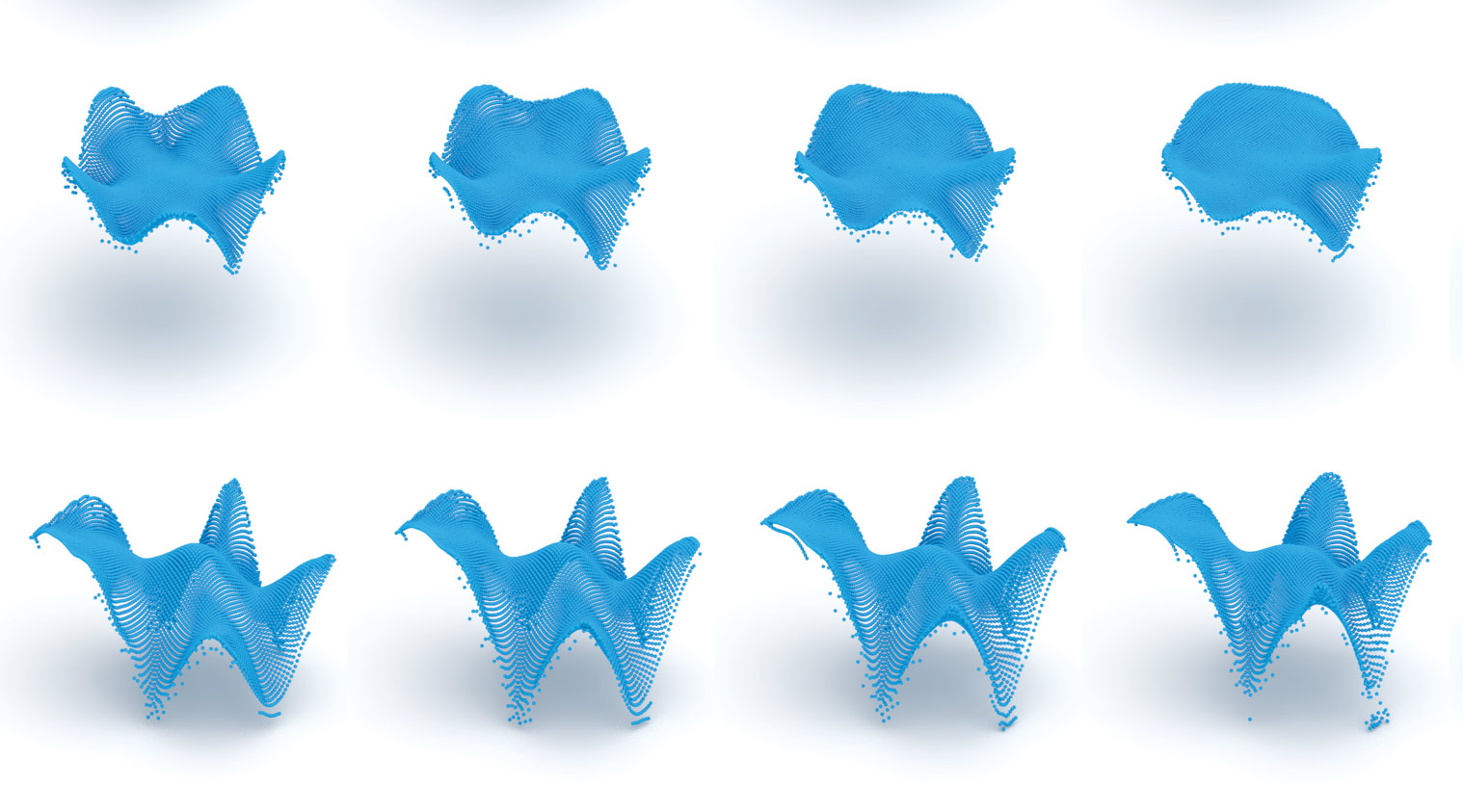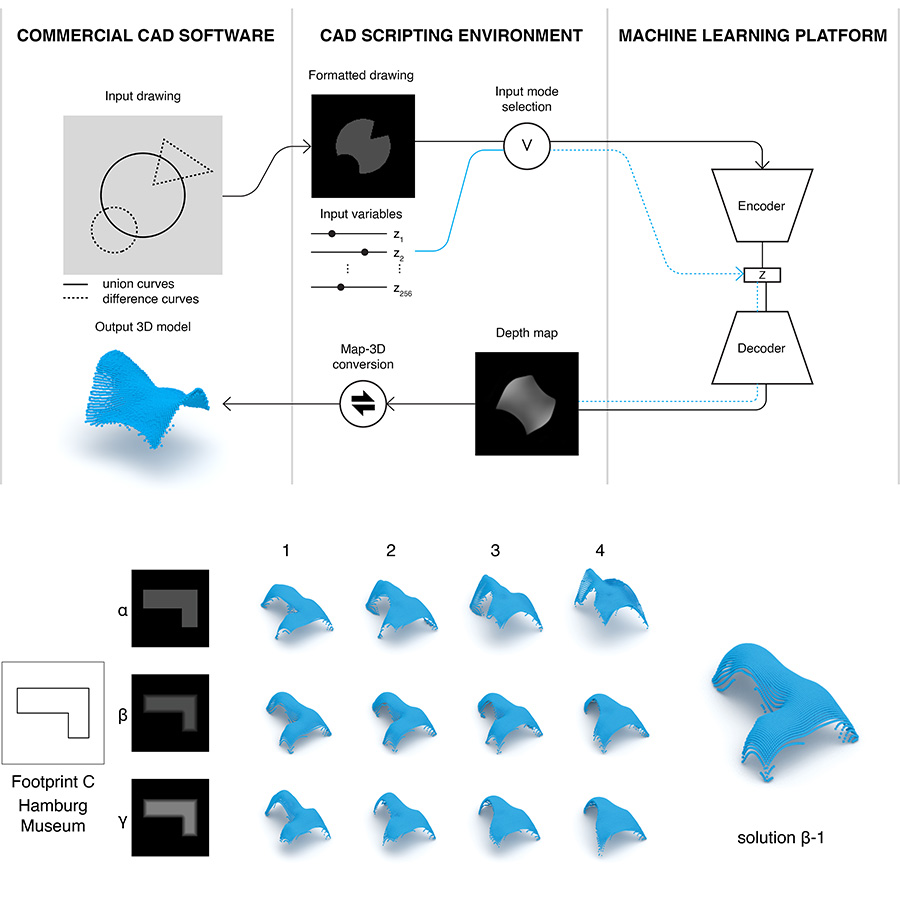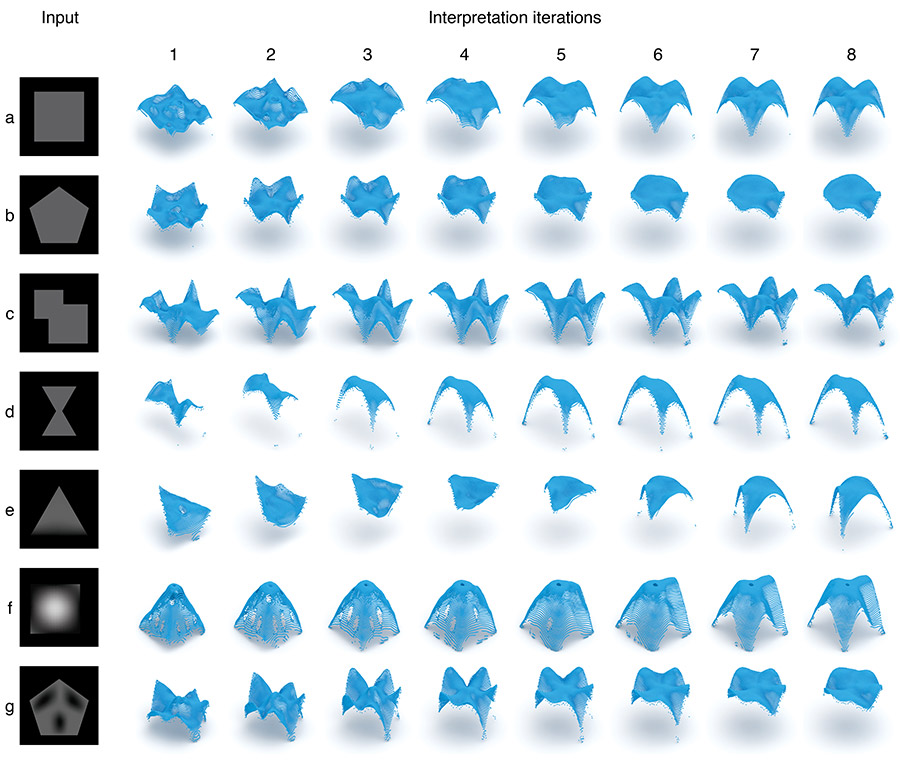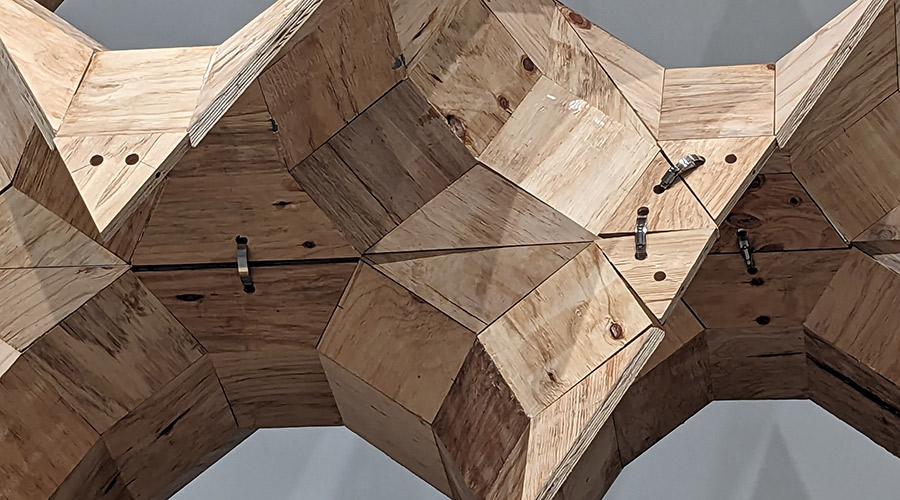This article results from a PhD research project I am supervising, which began in mid-2020 as part of a thesis on AI in design. It investigates (1) the ability of AI to generate plausible design options by recombining features extracted from just 40 dataset samples of shell and tensile structures, and (2) how the trained model can communicate with the designer through existing CAD software by interpreting 2D footprints and developing design suggestions in the form of 3D models. The article contributes to the discussion on the potential applications of AI in design. It shows that AI can be used not only for synthesising photorealistic images of architectural buildings but also for actual 3D models. It also demonstrates that by choosing an appropriate training and data augmentation strategy, as well as data representation format, the model can extract meaningful design features even from small datasets of design precedents.
Read the article here: https://doi.org/10.20898/j.iass.2022.008
Abstract:
This paper presents the development and application of a computational design tool that can be used to explore an AI-generated design space for the conceptual design of shell and tensile structures. An AI model was trained to extract geometric features from a dataset of 40 well-known design precedents of shell and tensile structures and to construct a design space. The trained model was then endowed with an interface to allow the designer to explore the design space within CAD software. Unlike the majority of current approaches to parametric design and optimisation, the exploration of the design space – and therefore the interaction between the designer and the computational model – does not take place via design variables, but through visual input. The potential of this tool to support the conceptual design of shell and tensile structures is examined through an application involving iconic design precedents. The application shows that, unlike form-finding and optimisation, this tool generates design suggestions that are not performance-driven, and do not require the statement of the boundary conditions, which would pre-determine the results. Despite this, such design suggestions can be considered plausible because they embed specific design knowledge resulting from a re-elaborating process of the main geometric features of the precedents used to train the AI model. These features include, for example, the shape of the openings, the number and location of the support points or the inversion of curvature, where present. The application results question the role of computational tools in conceptual design and illustrate an alternative strategy to explore the design space.







